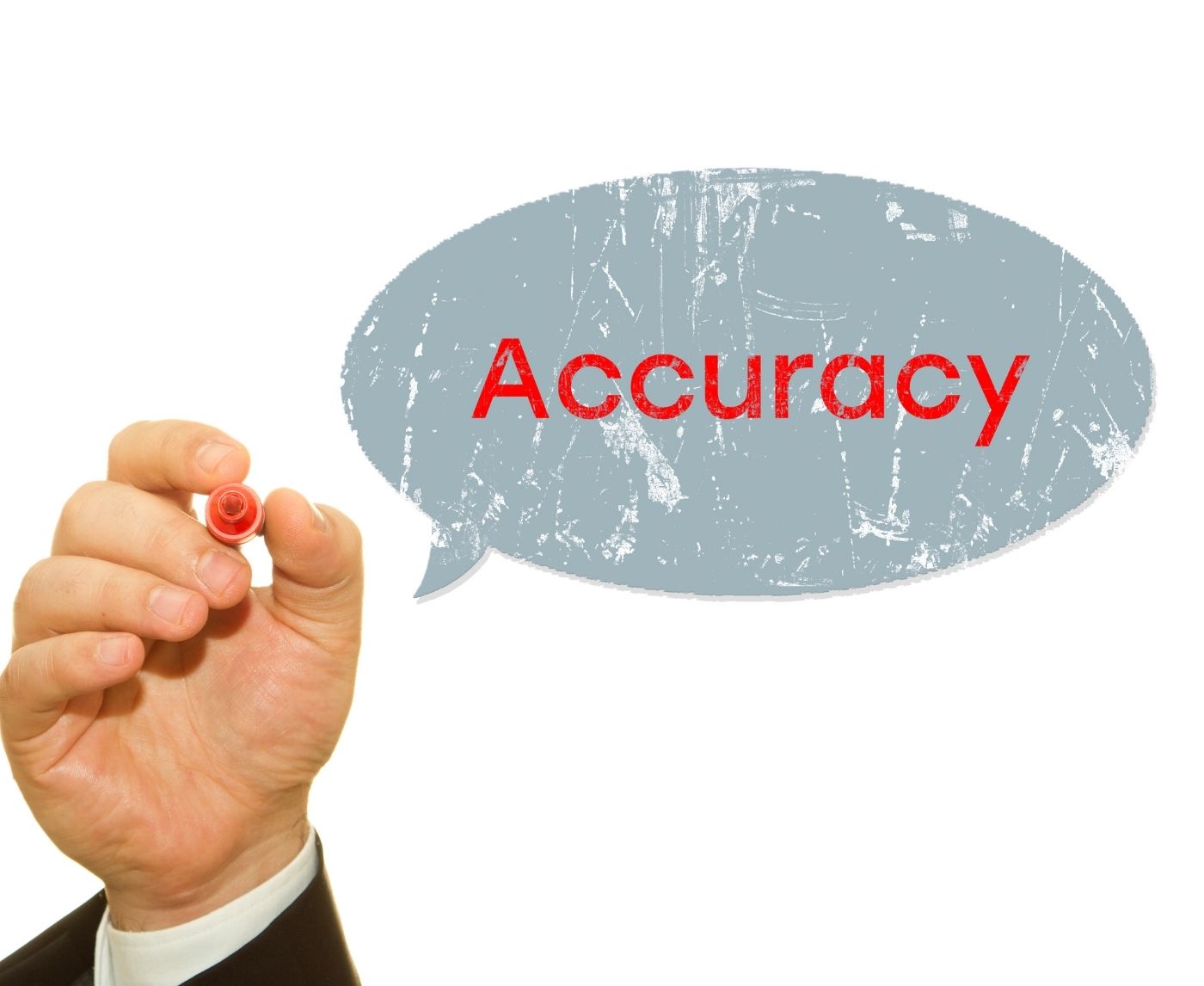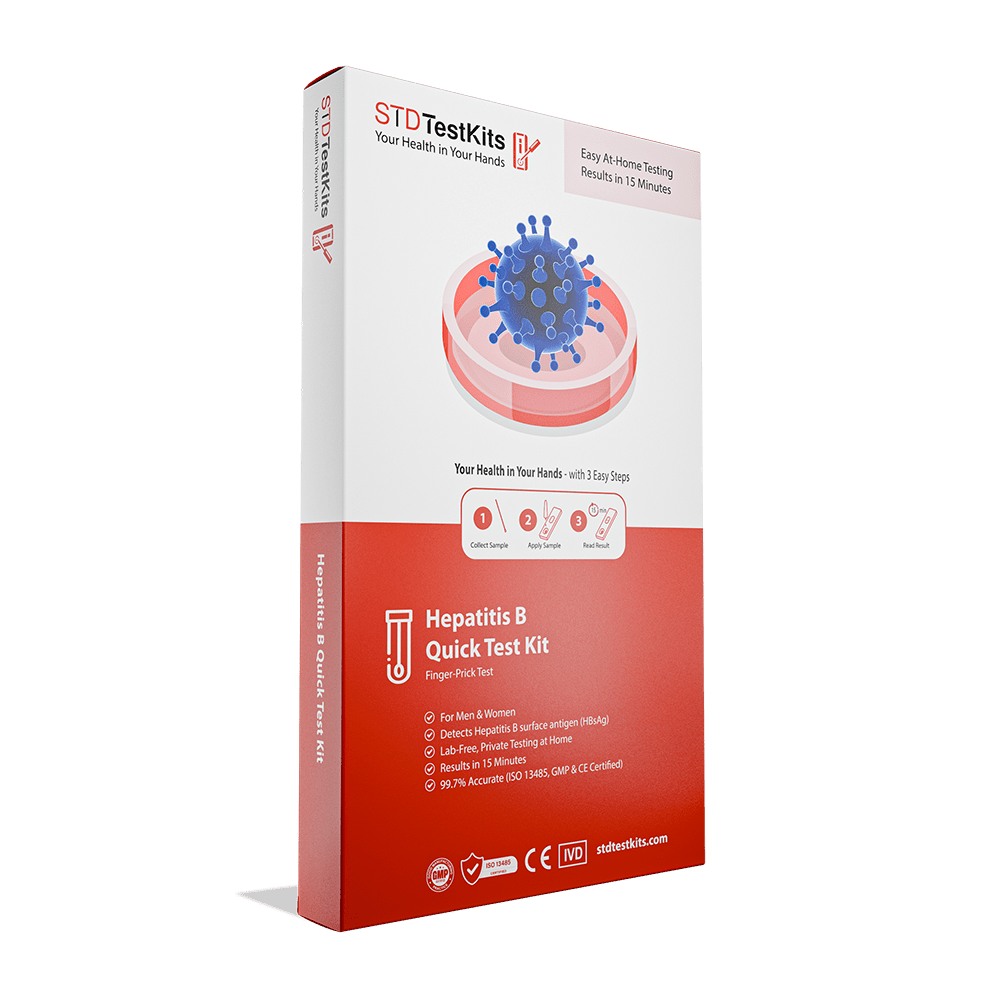When the STD Test Says “Negative” But Your Body Says “Something’s Wrong”
Quick Answer: At-home Hepatitis B rapid tests are highly accurate when used correctly, but testing too early, using expired kits, or misreading results can lead to false negatives.
First, What Does a Hep B Rapid Test Actually Detect?
All of these home tests for Hepatitis B test for the HBsAg, or Hepatitis B surface antigen. If you've got this antigen in your system, it's probable that you've contracted the virus and can pass it on to others. Antibody tests, meanwhile, indicate if you've ever had the virus or if you've received the Hepatitis B immunizations.
So, if you’re testing to see if you’ve been recently infected, or if you could transmit the virus to someone else, an HBsAg test is what you want. But it only works if enough of the virus is circulating in your system at the time of the test.
That’s where things get tricky. Testing too soon after exposure can give you a false sense of security. The antigen needs time to build up, typically about 30 to 60 days after infection, to be detectable.

People are also reading: Chlamydia in Gay Men: Why It Often Goes Undetected
How Accurate Are Hep B Rapid Tests?
When used correctly and at the right time, most Hepatitis B rapid tests are over 95% accurate. Some reach up to 99.7% in lab conditions. But here’s the thing, those numbers are based on perfect usage, ideal timing, and carefully controlled environments. At home? That’s a different story.
Let’s look at the breakdown:
Table 1. Estimated accuracy ranges of HBsAg rapid tests and how they change outside of lab settings.
In real life, things go wrong. You test too early. The kit was stored in heat. You didn’t wait long enough. That’s why understanding the limitations is just as important as using the test itself.
Timing Is Everything: The Hepatitis B Window Period
Hepatitis B isn’t like the flu. You don’t get exposed and immediately test positive. There's a window period, the time between when you’re exposed and when the virus shows up on a test. For Hep B, this window is usually 30 to 60 days, but it can stretch up to 180 days in rare cases.
That means if you test too early, say, a week or two after a risky exposure, you could get a false negative. The virus may be in your system, but the antigen hasn’t hit detectable levels yet.
Here’s what that looks like in timeline form:
Figure 1. How the Hepatitis B testing window affects rapid test accuracy.
If you're unsure when you were exposed, or if you had multiple exposures, it's better to test at the 4–6 week mark and consider a retest 90 days later. Especially if your first test is negative and you’re still concerned.
Common At-Home Testing Mistakes That Can Skew Your Results
Rapid tests are meant to be easy, but easy doesn't mean they can't make mistakes. If you make a mistake in timing, storage, or interpretation, a result can go from being correct to completely useless. And the worst part? You might not even know you made a mistake.
Here are the most common mistakes people make when they use a Hepatitis B rapid test at home:
Table 2. Real-world errors that reduce the accuracy of your at-home Hep B test.
Let’s be clear: user error is one of the biggest reasons for false negatives in rapid testing. Even a perfectly made kit can’t fix a rushed test or skipped step. That’s why reading the instructions, and sticking to the exact timing, isn’t optional. It’s the difference between peace of mind and a dangerous blind spot.
What Does a Faint Line on a Hep B Test Mean?
This question comes up constantly: “I got a faint line. Am I positive or not?”
Here’s the rule: any visible test line, even faint, should be considered a positive result. The intensity of the line doesn’t correlate with how “bad” or “advanced” your infection is. It’s simply detecting the presence of the HBsAg protein. If it’s there, it’s there, even if the line is light.
Many people assume faint lines are evaporation streaks, background noise, or errors. They toss the test. But ignoring a faint line could delay diagnosis and treatment.
Micah, 38, learned the hard way:
“I saw a faint second line, barely visible, and figured it was a dud. I didn’t follow up. Three weeks later, I donated blood and got a call from the Red Cross, my Hep B test was positive. I’d been walking around infectious for a month.”
If you see any test line, get confirmatory testing at a clinic. Many public health departments offer free or low-cost Hep B testing and vaccinations. And if your kit includes a telehealth option, use it. Don’t try to self-diagnose with guesswork.
When Should You Retest, or Get a Confirmatory Lab Test?
Let’s say you tested negative. No line, just the control band. But something doesn’t sit right, maybe you were exposed recently, maybe the kit was old, maybe you didn’t follow all the steps. Should you trust it?
The answer: Not always. Here’s when to retest or confirm with a lab:
- You tested within 30 days of a risky exposure: Wait and retest around day 45 or 60.
- Your result was faint, invalid, or hard to read: Repeat the test with a fresh kit, or get a lab test.
- You have symptoms but tested negative: Don’t ignore it. Get a clinical evaluation, even if just for peace of mind.
- Your partner tested positive: Even with no symptoms, confirm your status. Repeat testing can catch infections that were too early to detect.
The best use for rapid tests is as screening tools. They are not meant to find out if someone has chronic Hepatitis B or to rule out infection in complicated cases. If you are at high risk, have a weak immune system, are pregnant, or are not sure, see a doctor.
What Is The Difference Between a Rapid Test and a Lab Test?
We shouldn't sugarcoat it: lab tests are still the best way to find Hepatitis B. But that doesn't mean quick tests aren't useful. They're just different tools that do different things.
Here’s how they stack up:
Table 3. Key differences between rapid and lab-based Hepatitis B testing.
Think of quick tests as being like pregnancy tests: they are quick, useful, but not always right. If it's positive, do something. If it's bad but your gut tells you otherwise, don't stop there. That second step could save your liver.
“The Test Said No. My Liver Said Otherwise.”
Andre, 29, ordered a Hep B test online after a medical tattoo overseas. He followed the directions to a T. Ten minutes later: negative. He felt relieved. But over the next month, fatigue hit him like a truck, and he started to notice yellowing in his eyes.
“I figured it was just stress or too much drinking. But something told me to get checked anyway.”
A full lab panel confirmed acute Hepatitis B. His liver enzymes were through the roof. That “safe” window when he thought he was in the clear? It had betrayed him, because he’d tested too early.
This happens more often than we admit. A rapid test is only a snapshot. It doesn’t know your timeline. It doesn’t know your exposure history. You do.
And if that inner voice is telling you something still feels off? Listen to it.

People are also reading: Can You Get an STD from Saliva, Sweat, or Blood? Here’s What Actually Spreads It
Don't Let Shame Delay Your Next Test
Hepatitis B still carries stigma, especially among men who have sex with men, immigrants from high-prevalence countries, and people with tattoos or past drug use. But shame won’t stop a virus. Silence won’t save your liver. Only testing, treatment, and awareness will.
You deserve to know your status without judgment. You deserve options that respect your privacy. Whether you’re newly exposed, living with risk, or just trying to be proactive, there’s no wrong time to take control.
Whether it’s a question mark or a faint line, you don’t have to face it alone.
Order a discreet combo test kit that includes Hep B along with other common STDs. Fast shipping. No awkward conversations. Just answers.
FAQs
1. How soon after exposure should I take a Hep B rapid test?
Not immediately. Give it time. The virus needs a few weeks to show up in your blood, usually around 30 days after exposure. If you test earlier, you’re rolling the dice. Play it safe: wait at least 4 weeks, and consider a second test at 3 months just to lock it in.
2. I saw a super faint line, does that count?
Yep. Faint still means positive. Don’t squint and convince yourself otherwise. That line means the test picked up surface antigen. Your next move? Confirm it with a lab test and talk to a provider.
3. Can one test tell me if I have both Hep B and Hep C?
Nope, they’re completely different viruses and need different tests. Hep B kits usually detect HBsAg; Hep C kits look for antibodies or viral RNA. Don’t assume you’re covered for both unless your kit says so.
4. What happens if I mess up the blood drop?
Hey, it happens. If you use too little, too much, or miss the drop zone, the test might glitch or show an invalid result. If the control line doesn’t appear, toss it and try again, with clean hands and a clear mind.
5. Does the Hep B vaccine affect my test results?
Good question. The vaccine can cause you to test positive for Hep B antibodies, but it won’t mess with a test that checks for surface antigen (which most rapid kits do). So no, a positive rapid test probably isn’t from the vaccine.
6. I got a kit online for a very low price. Can I believe it?
Take care. Don't put your health on the line if it doesn't come with clear instructions, has typos, or seems sketchy. Stick with a reliable provider so you don't have to guess and get bad results.
7. My test says yes. Do I also need a lab test?
Yes, for sure. A quick test is not the end of the line; it's a sign to take action. A lab can check your result, tell you if it's acute or chronic, and help you plan what to do next. Don't skip it.
8. I tested negative. Am I totally in the clear?
Not necessarily. If you tested too soon after exposure or made a mistake with the kit, you might’ve missed something. If there’s doubt, or risk, retest in a few weeks. You’re not paranoid. You’re being smart.
9. What does “invalid” even mean?
It means the test didn’t work. No control line = no trust. Maybe the sample was off, maybe the test was damaged, or maybe the timer was ignored. Whatever the reason, toss it and start fresh.
10. Is there a “best time” of day to test?
Not really. Morning, night, whenever works for you. Just avoid testing right after intense workouts, alcohol, or greasy food, since those can mess with blood clarity. Aim for calm and focused. You're testing, not trying to win a speed round.
How We Sourced This Article: We built this guide from peer-reviewed clinical data, global hepatitis screening guidelines, rapid test manufacturer specs, and lived experiences from users who’ve shared their real-world testing challenges. Below, we’ve highlighted some of the most relevant and reader-friendly sources.
Sources
3. HepB Foundation – Understanding Test Results
4. CDC — Clinical Testing & Diagnosis for Hepatitis B
5. Diagnostic Accuracy of Tests to Detect Hepatitis B Surface Antigen — BMC Infectious Diseases
About the Author
Dr. F. David, MD is a board-certified infectious disease specialist with over 20 years in viral hepatitis research and STD prevention. He advocates for accessible, stigma-free testing and believes rapid diagnostics are a vital bridge for people who need answers now, not next month.
Reviewed by: R. Vega, RN, MPH | Last medically reviewed: October 2025
This article is for informational purposes and does not replace medical advice.






